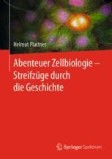Search
Search Results
-
The nervous and visual systems of onychophorans and tardigrades: learning about arthropod evolution from their closest relatives
Understanding the origin and evolution of arthropods requires examining their closest outgroups, the tardigrades (water bears) and onychophorans...

-
Microbial applications for sustainable space exploration beyond low Earth orbit
With the construction of the International Space Station, humans have been continuously living and working in space for 22 years. Microbial studies...

-
Experimental cryoconite holes as mesocosms for studying community ecology
Cryoconite holes are surface melt-holes in ice containing sediments and typically organisms. In Antarctica, they form an attractive system of...

-
Integrative redescription of a common Arctic water bear Pilatobius recamieri (Richters, 1911)
Tardigrada are a group of microscopic metazoans that inhabit a variety of ecosystems throughout the world, including polar regions, where they are a...

-
DNA methylation atlas and machinery in the develo** and regenerating annelid Platynereis dumerilii
BackgroundMethylation of cytosines in DNA (5mC methylation) is a major epigenetic modification that modulates gene expression and constitutes the...

-
Environmental Adaptations: Encystment and Cyclomorphosis
Stressful environmental conditions generally limit animal survival, growth, and reproduction and may induce dormancy in the form of various resting...
-
When THAT Exception Persists Almost as THAT Exception
We present the counterpart to Chap. 4 in Chap. 5 , where we...
-
Environmental Adaptations: Cryobiosis
Tardigrades are well known to withstand very low temperatures in the anhydrobiotic state. However, they even tolerate such low temperatures like...
-
Effect of lifespan and age on reproductive performance of the tardigrade Acutuncus antarcticus: minimal reproductive senescence
Reproductive output is one of the central attributes of life history, and knowledge of age-specific reproduction can enhance the understanding of...

-
High diversity in species, reproductive modes and distribution within the Paramacrobiotus richtersi complex (Eutardigrada, Macrobiotidae)
For many years, Paramacrobiotus richtersi was reported to consist of populations with different chromosome numbers and reproductive modes. To clarify...

-
Reproduction, Development and Life Cycles
In tardigrades reproduction occurs only through eggs, fertilized or unfertilized, and therefore only through gametes. Tardigrades exploit several...
-
Are meiofauna a standard meal for macroinvertebrates and juvenile fish?
Due to the lack of empirical data, meiofauna are often underestimated as prey for freshwater animals and are commonly regarded as trophic dead ends....

-
The landscape of aging
Aging is characterized by a progressive deterioration of physiological integrity, leading to impaired functional ability and ultimately increased...
-
Towards an Integrated Triad: Taxonomy, Morphology and Phylogeny
In the early days of meiobenthology (this term did not even exist), researchers were confronted with a plethora of new taxa and novel structures,...
-
Multiple elements of soil biodiversity drive ecosystem functions across biomes
The role of soil biodiversity in regulating multiple ecosystem functions is poorly understood, limiting our ability to predict how soil biodiversity...

-
Long-distance passive dispersal in microscopic aquatic animals
Given their dormancy capability (long-term resistant stages) and their ability to colonise and reproduce, microscopic aquatic animals have been...
-
Resistance of Dormant Eggs of Cladocera to Anthropogenic Pollutants
Many Cladocera species under unfavourable conditions produce resting eggs that can survive for years in deep diapause. Resting eggs form egg banks at...
-
New multivariate image analysis method for detection of differences in chemical and structural composition of chitin structures in tardigrade feeding apparatuses
The feeding apparatus of the eutardigrade Paramacrobiotus richtersi was examined with confocal laser scanning microscopy using three different...

-
Arctic Plants in Svalbard
Svalbard is not a name of an island. Svalbard is the name of an archipelago that includes all of the islands and islets of the Arctic Ocean. The...
-
Dynamik intrazellulärer Prozesse: Gleitschienen, Zugstränge und gezielte „Paketzustellung“
Organellen haben oft eine ganz bestimmte Anordnung in der Zelle. Diese wird durch mehrere Faktoren vorbestimmt. Eine gezielte Anlieferung von...
